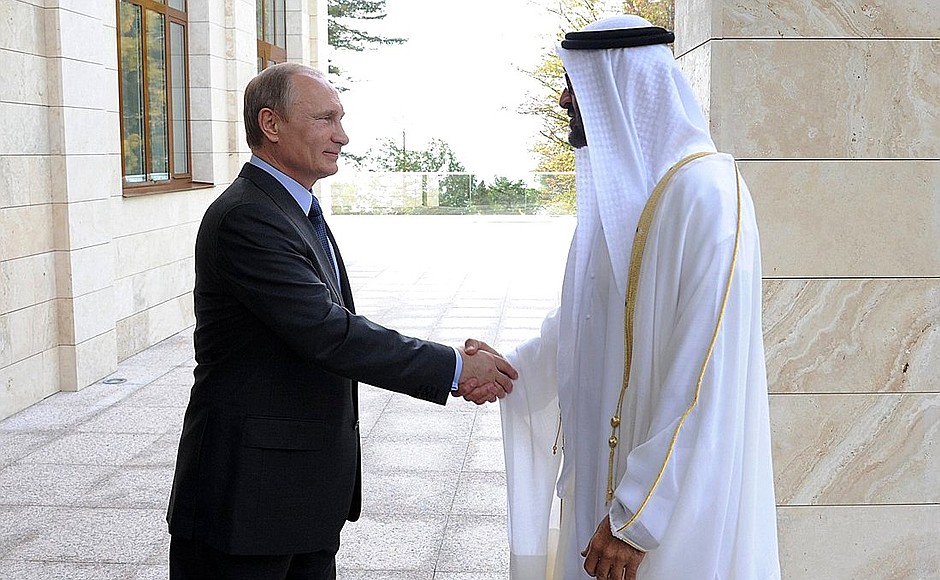by James M. Dorsey
Climate change, much like war, could prove to be a geopolitical and commercial gold mine. At least, that is the take of DP World, Dubai’s global port operator, and Russia’s sovereign wealth fund.
DP World is partnering with the fund, the Russian Direct Investment Fund (RDIF) to create an all-year round maritime sea route from Europe to Asia through the Arctic.
“Time is money in business and the route could cut travel time substantially more than traditional trade arteries for cargo owners in the Far East wanting to connect with Europe, coupled with benefits to the Russian economy,” DP World chairman and CEO Sultan Ahmed bin Sulayem told the Arab News.
In partnering with DP World, RFID brings to the table Rosatom, Russia’s atomic energy agency, which operates nuclear-powered ships that could ply the route, and Norilsk Nickel, a mining and commodities company.
Dubai and Russia are betting that climate change, which has dramatically shrunk the Arctic ice sheet in the past two decades, has made possible what eluded Europeans for centuries: ensuring that the Northeast Passage linking the Northern Atlantic with the Pacific is accessible all year round even if rail remains faster than carrying cargo by ship.
The commercial and geopolitical implications of all year-round passage are significant.
Beyond challenging the status of the Suez Canal as the foremost link between the Atlantic and the Pacific, the Arctic route would grant Russia the one thing it has so far failed to achieve in its partnership with China: a key role in the transportation linkages between Europe and Asia that the People’s Republic is seeking to create with massive investment in its Belt and Road initiative.
That role would be bolstered by the fact that the Arctic route would cut the maritime journey from Northeast Asia from somewhere between 34 and 45 days through the Suez Canal to 23 days via the Northeast Passage.
“Because of global warming, there are some things happening that open some opportunities. Russia has this frozen coast all of the seasons. Now it’s opening up and it’s possible to navigate for nine months. When you have special ships, you can actually have 12 months navigation,” RFID CEO Kirill Dmitriev told the Saudi paper.
The partnership with Dubai gives a new laese on life to Russian aspirations to become a key node in Belt and Road linkages after Russia failed to persuade China Railway Eryuan Engineering Group (CREEC) to invest in converting the Trans-Siberian Railway into a high-speed link that would connect St. Petersburg with the Far East.
CREEC last year definitively dashed Russian hopes, declaring that the “the high-speed rail through Russia will never pay off.”
In a further setback, China simultaneously opted for an east-west road link through Kazakhstan after efforts to complete a Moscow-St. Petersburg highway as well as a ring road around the Russian capital and a Volga-Kazakhstan road stalled.
Frustrated with the lack of Chinese interest, state-run Russian Railways is itself investing heavily and reaching out to Japan to significantly increase freight traffic on the almost 9,300-kilometre-long trans-Siberian route.
The rail company aims to increase by a factor of 100 the number of containers transported from Japan to Europe from 3.000 last year to 300,000 and tonnage by 50 percent from less than 90 million to 180 million, according to Russian Railways first vice president Alexander Misharin.
Mr. Misharin told Nikkei that the investment, including US$745 million last year, involves laying double tracks, linking the railroad to seaports and automating the system.
Mr. Misharin was hoping to cooperate with Japan Railways Group to create a door-to-door cargo transportation system between Japan and Europe that would reduce transportation time to at most 19 days. He said the Russian rail company was looking at building logistics centres with Japanese trading firm Sojitz.
Upgrading the Trans-Siberian Railway would significantly bolster Russia’s geography as a key bridge in the emergence of Eurasia, the gradual integration of Europe and Asia that ultimately would erase the seemingly artificial division of one landmass into two continents.
It would also significantly facilitate linking the railway to the Belt and Road by making it financially feasible.
That is less far-fetched with China Railway International Group lending Russia US$6.2 billion for the construction of a 790-kilometre long Moscow-Kazan high speed rail line, envisioned as the first phase of a link between the Russian capital and Beijing that would cut travel between the two cities to two days.
To secure the loan, Russia agreed to use Chinese technology and construction equipment.
Russia has also expressed interest in linking its Trans-Siberian Railway to the Chinese-controlled Pakistani port of Gwadar, a Belt and Road crown jewel.
Russia is betting that the combination of the Northeast Passage and upgraded Trans-Siberian rail links would make its positioning as a transit hub significantly more attractive.
That is true even though the Northeast Passage is too shallow for giant box ships that traverse the Suez Canal and lacks the kind of ports capable of accommodating those vessels. The Passage is likely to see primarily smaller container ships.
One way or the other, DP World, expecting to operate ports that Russia plans to build along an Arctic route, would emerge a winner by expanding its global footprint. “We were always missing Russia. Russia is a link,” DP World’s Mr. Sulayem said.
Said Russian shipping giant Sovcomflot CEO Sergey Frank: “Trade is growing and there is space for everybody. If the cargo originates in the south part of China, it will go through the Suez. If it originates in Northern China, the NSR (Northern Sea Route) will be seriously considered. Cargo will always find the fastest way to move.”
Republished, with permission, from The Turbulent World of Middle East Soccer.





